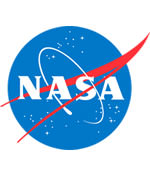
Image credit: NASA
NASA announced the creation of an independent Engineering and Safety Center (NESC) at the agency’s Langley Research Center. The 250-person division will provide independent assessment and safety review for various NASA projects and missions. The office was a response to the Columbia disaster, ideally to prevent the kind of safety problems that were uncovered by the investigation team. The team leader has yet to be announced.
NASA today announced plans to create an independent Engineering and Safety Center (NESC) at the agency’s Langley Research Center in Hampton, Va., to provide comprehensive examination of all NASA programs and projects. The center will provide a central location to coordinate and conduct robust engineering and safety assessment across the entire agency.
“Among the things we’ve learned during the investigation of the Columbia tragedy is the need to independently verify our engineering and safety standards. The new NASA Engineering and Safety center will have the capacity and authority to have direct operational influence on any agency mission,” said NASA Administrator Sean O’Keefe. “When it comes to safety and engineering analysis, we need to improve our ability to share technical information, practices and talent, and independently ensure we are in the best position to achieve mission success.”
The NESC is expected to draw on the talents of about 250 people throughout NASA and will report to former astronaut General Roy Bridges, Langley Center Director. Bryan O’Connor, also a former astronaut and Associate Administrator for the Office of Safety and Mission Assurance at NASA Headquarters in Washington, will have policy responsibility for the organization. O’Connor’s task will be to assure the effective use of all agency assets and expertise to derive the independent assessments.
“As we move forward with our ‘Return to Flight’ efforts, the development and implementation of the NESC will help us focus on the future of our technical and safety imperatives,” said O’Connor. “We have a responsibility to make our programs as safe and as sound as possible. This project raises our commitment to unprecedented levels.”
Planned activities of the new organization include:
# Independent engineering assessment and testing to support critical NASA projects and programs;
# Engineering and safety review and evaluation through independent analysis, hazard and risk assessment, safety audit, and participation in mishap investigations;
# A central location for independent trend analysis utilizing state-of-the-art tools and techniques;
# A structure to support engineering collaboration for problem resolution;
# Central coordination of engineering and programmatic lessons learned, technical standards, and technical discipline expertise; and
# Independent inspection and validation of activities to ensure the constant maintenance of NASA safety standards.
“We need to go further than what we expect to see in the findings of the Columbia Accident Investigation Board (CAIB),” added Dr. Michael Greenfield, Associate Deputy Administrator for Technical Programs at NASA Headquarters in Washington. Greenfield co-chairs the agency’s Return to Flight Team with Associate Administrator for Space Flight William F. Readdy. “We need to look beyond the CAIB and provide a centralized clearinghouse that provides NASA with authoritative and consolidated analysis and assessment for all of the agency’s high-risk endeavors,” Greenfield observed.
Original Source: NASA News Release
